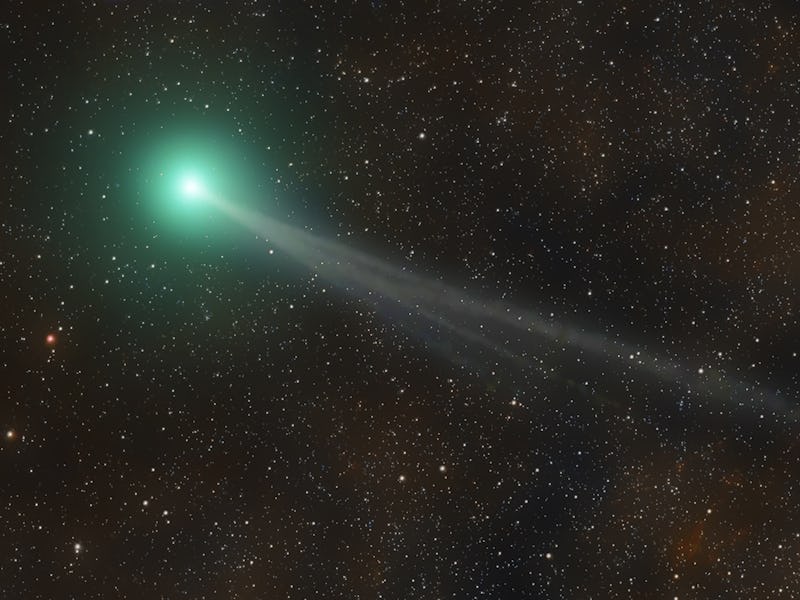'Bouncing' Comets Could Be Seeding Life Across The Universe
Space rocks could have concentrated necessary prebiotics for life in one place.

Huddled planets may have the skills to lasso comets — and perhaps get life to emerge, according to a new study.
Earth was a cauldron of chaos 4.5 billion years ago. Somehow, it seeded life. And when it did, Earth emerged as a singular place amongst the planetary throng, at least as far as the Solar System is concerned.
The answer to how life began on Earth isn’t purely introspective. The rules for making life could apply elsewhere, too. The number of known planets beyond the Sun, called exoplanets, has now surpassed 5,500. Some of their conditions are a far stretch from what we see in our cosmic neighborhood, while others seem more familiar. The question of life then comes up. If the Milky Way is filled with billions of stars, couldn’t life have sprouted on one of their worlds?
Life on Earth appeared 3.8 billion years ago, and it had to come about in one of two ways: Either endogenously, meaning 100 percent homegrown, or it’s exogenously, in which case it got an extraterrestrial boost from asteroids or comets.
There are a few compelling reasons why space rocks could have sourced life. Studies have shown they can be rich in prebiotics. When researchers analyzed an asteroid Ryugu sample, which Japan’s Hayabusa2 spacecraft delivered to Earth in 2020, they found traces of niacin (also known as vitamin B3), plus uracil, an essential building block of a compound that helps the expression of genes in living organisms. When Europe sent its Rosetta mission to visit Comet 67P/Churyumov–Gerasimenko in 2014, it found glycine, an amino acid commonly found in proteins, as well as phosphorus, a key component of cell membranes.
Space rocks could also have, upon impact, concentrated the prebiotics in one place.
“One particular challenge with the initial stages of prebiotic chemistry is stockpiling the required ‘building block’ molecules, as the chemistry is very inefficient at low concentrations. The advantage of comets would then be that they could deliver all of their organics into the small crater they produce, which might help get around this problem,” Richard Anslow, a Ph.D. astronomy student at the University of Cambridge in the U.K., tells Inverse. Anslow is the lead author of a new paper, published Tuesday in the journal Proceedings of the Royal Society A Mathematical Physical and Engineering Sciences.
Anslow and the team broke down the fundamentals of a star-exoplanet system and focused on three qualities. Their mathematical models took into account the mass of an exoplanet getting impacted by a comet, the mass of the star it orbits, and how tight the exoplanet was to its rocky siblings.
Anslow says that these helped the models to get a minimum speed for the comet strike.
If exoplanets are huddled in close concentric orbits, “nearly as close together as they can be without becoming unstable,” Anslow says, they could collectively slow a comet down enough so that it veers off its elongated course around the Sun, while also striking a planet relatively softly.
A reduced speed could make for a softer landing. This would help the prebiotic molecules to survive the crash. The team dubbed these tight-knit exoplanets as “peas-in-a-pod” systems.
The detection of the chemical fingerprints of life, called biosignatures, might rise as the population of known exoplanets increases. Their appearance in peas-in-a-pod systems could implicate comets in the story of life in the universe.
Or, their absence could mean that astrobiologists must go back to the drawing board.